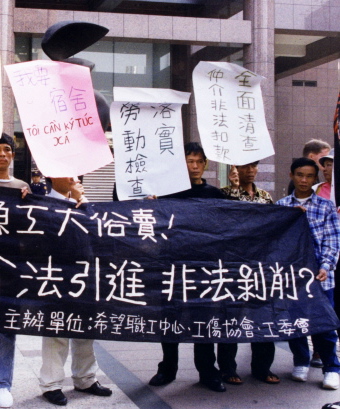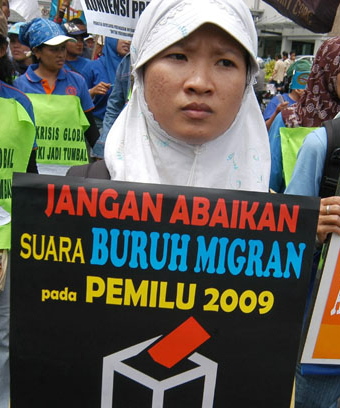Despite increasingly worrying levels of harassment and surveillance, sexual diversity and sexual empowerment are finding spaces in Indonesia
Versi Bh. Indonesia
Sharyn Graham Davies & Irwan Hidayana
Indonesia has experienced enormous change in its relationship to sexuality in the last decade. In 2008, the Anti-Pornography Law passed. In 2016, the ‘LGBT crisis’ saw homophobic and transphobic statements issued from high social and political levels. In 2017, Indonesia’s Constitutional Court narrowly rejected a petition to criminalise all sex outside marriage with a five to four vote. The ratification of an anti-sexual violence law languishes. At the time of publication (January 2020) , concerted moves are again afoot to criminalise sex outside of marriage, with a vote having being postponed. In 2019, Jakarta also got its first syariah-accredited hospital where sexual health is unlikely to be prioritised. In addition, some government institutions refuse to recruit people as civil servants on the basis of them being considered ‘perverts’ in sexual orientation and behaviour.
With all these unsettling moves, it is timely to ask how everyday people are reacting to a landscape of increasingly punitive sexual surveillance.
We became particularly motivated to compile this special edition after working on the Indonesian translation of the book Sex and Sexualities in Contemporary Indonesia. Working on the translation brought home how much things have changed since 2015. For example, the introduction to the original book is optimistic about Indonesia’s progress towards recognising the rights of all Indonesians, regardless of sexuality. The book makes no mention of the term LGBT, yet a few years on, this acronym, rendered with evil connotations, has reached almost all of Indonesia.
It is a bitter disappointment that the book predicted a positive sexual future for Indonesia’s sexual minorities, and indeed for all Indonesians, that is yet to materialise.
We discussed doing a second book on sexualities in Indonesia, but we wanted something more immediate to allow us to grapple with ongoing changes. We thus decided on doing a special edition for Inside Indonesia which provides not only a platform for discussing changes vis-à-vis sexuality but also a launch pad for new researchers focusing on the topic of sexuality in Indonesia. We thank Linda Bennet for all her early support.
In this special edition we draw together 19 articles discussing various aspects of sexuality in Indonesia. All articles are authored or co-authored by an Indonesian except two, and we are thrilled to offer the full special edition simultaneously in both English and Indonesian. We are thrilled too that contributors are globally spread out, with people writing in from Indonesia, Australia, New Zealand, Sweden, Germany, France, the Netherlands, Canada, the US and the UK.
We want to thank the translators. All authors translated their own article, with the exception of three, which Irwan Hidayana kindly undertook. All Indonesian versions were proofed by Irwan - an enormous amount of work.
We also want to thank Jemma Purdey and Tim Fitzgerald. Tim read, edited and proofed all 19 articles, and Jemma provided sage advice and uploaded all the articles, including hyperlinks and images. An incredible workload. Thank you.
The collected articles can be broadly grouped into four themes: popular culture, LGBT, HIV, and sexuality.
Popular culture and sexuality
Leading the pack is an extraordinary article by scholar/artist/activist Patresia Kirnandita. In ‘#EroticArt: Agency, advocacy and women’s sexuality’, Patresia shows how art and activism combine to drive the discourse about female sexuality on Instagram. Reflecting on nine images of erotic art she has posted on Instagram (@kirnantresia), alongside the work of other artist/activists, Patresia’s contribution makes dramatic reading and viewing. Indeed she shows how women are pushing the boundaries of what is acceptable in terms of women’s sexuality in contemporary Indonesia.
Picking up on the theme of women’s sexual empowerment and social media, Monika Winarnita, Nasya Bahfen, Gavin Height, Joanne Byrne and Adriana Rahajeng Mintarsih write about ‘#MeToo Indonesia’. The authors show, with a selection of images, how Indonesian feminists are capitalising on the #MeToo movement and using social media to facilitate offline action. The authors also explore The House of the Unsilenced campaign, which brought together Indonesian sexual assault survivors and artists to create new works on survivors’ lives. The article showcases the resilience of Indonesian women.
Teguh Widaya explores the fascinating world of ‘Queer pop culture’. Taking as its central theme Korean idols and Japanese boys’ love comics, Teguh shows how these forms of popular culture are helping Indonesians find new places for queer expression in Indonesia. Teguh also examines the possibility of interactions in the online world disrupting patriarchy in the off-line world. Teguh closes with the hope that queerness may permeate conservative morality and help reframe Indonesia in a more sexually progressive light.
Another aspect of popular culture, hip-hop, is explored by Diana Teresa Pakasi. Diana argues that hip-hop should be combating, not reinforcing, the problem of sexual violence in West Papua. In ‘Hip-hop: a missed opportunity’, Diana writes about hip-hop performances in the province, especially in relation to West Papua having one of the highest rates of sexual violence in the world. Diana finds, though, that while hip-hop provides space for young men to develop their masculinity, most of the hip-hop songs they compose and perform reinforce the notion that sexual violence against women is acceptable.
LGBT
The next group of articles come under the broad heading of LGBT, with a focus on the difficulty of being LGBT in contemporary Indonesia. In ‘Online hate speech’, Dina Listiorini shows that between 2016 and 2018, Indonesia’s online media saw an unprecedented rise in anti-LGBT hate speech, and an extraordinary level of coverage of LGBT issues more broadly – a sign of the intensity of debate on the subject.
In further exploring the issue of hate speech, Made Diah Pitaloka Negara Puteri and Firdhan Aria Wijaya write about the devastating effect of unchecked hate speech on Indonesia’s LGBT community. In ‘Mobilising fear’ they call for Indonesia to acknowledge and honour LGBT as a part of the nation’s diversity.
Given this rise in hate speech, it is unsurprising that many LGBT Indonesians want to move overseas. In ‘Breaking free in gay Paris' Wisnu Adihartono recounts stories of gay Indonesian men who move to France in order to lead an openly gay life.
In keeping with the expatriate theme, the next article was written in Sweden. In a moving piece, wife and wife team Jeanna Nilsson and Kei Nilsson recount both an insider and outsider perspective of being lesbian in Indonesia. Now based in Sweden, Kei was born and raised in Indonesia and gives her reflections on Indonesia as a lesbian looking from the inside out. Her wife, Jeanne, a Swede, gives her perspective on queer issues looking in at Indonesia from the outside. In ‘Fearing the queer’, the couple argue that Indonesia’s national image excludes many people, in clear contradiction to its laws and principles, especially Unity in Diversity.
Pushing for Indonesia to include all sectors of society in social justice work, Diego Garcia Rodriguez looks at how a large number of Indonesian activists work together to promote LGBT tolerance. In ‘Allies in Java’ Diego shows that, without being too loud, LGBT-rights activists and their allies are successfully using religion to promote LGBT rights. This article provides welcome insight into a potential way forward for a harmonising of religion and sexuality.
Wrapping up this section is an interesting perspective offered by Irmia Fitriyah in a piece entitled ‘Incarnation as waria’. Waria is an Indonesian term for trans woman. Transpuan (or transgender perempuan/transgender woman) is also an increasingly common term. Irmia shows that people do not just become waria but rather they need to be mentored and brought into being by more senior waria.
HIV
HIV prevalence continues to grow in Indonesia, unsurprising in an environment of punitive sexual surveillance. In 1998, as Indonesia was embracing democratic reform, the HIV prevalence rate among young men who have sex with men in Jakarta was low, but now estimates put it as high as 50 per cent. Sexual persecution does not stop sexual activity, it merely increases suffering. Four articles in the special edition explore the current HIV situation in Indonesia.
Najmah, Sharyn Graham Davies and Sari Andajani examine the growing prevalence of HIV among mothers. In ‘Wives and mothers at risk of HIV’, the authors push Indonesia to acknowledge wives and mothers as complex beings and not as impossible recipients of HIV.
One of the difficulties in getting people onboard with HIV prevention is that HIV education is seen as boring and inappropriate. In analysing this situation, Dinar Lubis, Sari Andajani and Cath Conn write in ‘Combatting HIV online’ that HIV prevention tactics remain inappropriate for young men who have sex with men. The authors argue that to prevent the transmission of HIV, health care practitioners need to develop and disseminate information that is appropriate for the target audience.
In addition to developing good educational tools, another key to HIV prevention is reducing stigma. Azalia Muchransyah argues in ‘HIV stigma halting progress’ that although HIV awareness is improving, stigma makes testing uncomfortable and treatments unpopular. Sharing her experience working with people living with HIV in prison, and her experience of undergoing compulsory HIV testing upon submitting her marriage documents, Azalia’s contribution is a powerful one.
Working toward providing HIV treatment and care to men who have sex with men, Benjamin Hegarty and Sandeep Nanwani write about ‘Providing hope’. In their empathetic article, they show that engaging the wider community, and particularly outreach workers, is a key tool in providing HIV care to men who have sex with men. Hegarty and Nanwani conclude that creative Indonesian responses to HIV care should not rest on punishment and retribution but rather actively support people living with HIV.
Sexuality
The final section explores sexuality more broadly but with a common theme of surveillance and shame. Nelly Martin Anatias asks why we let men off the hook for extramarital affairs but blame women. In her article on ‘Pelakor, the husband stealer’, Nelly uses Instagram posts as a tool to explore this issue. She shows that the pelakor, or mistress, is always the one to blame for infidelities while the husband is always framed as innocent. Shame and blame are attached primarily to women.
Narratives of shame are perhaps felt most strongly in Aceh where approaches to sexual infidelities can be deadly. In her evocative piece entitled ‘Witnessing shame and punishment', Joni Lariat shows how images of Syariah punishment are a key strategy of social control in Aceh. Through public canings captured and preserved on social media, social reintegration after sexual infidelities becomes nearly impossible.
Further exploring the topic of faith and sexuality, Ferdiansyah Thajib reveals in his article ‘Queering piety’ that there is no singular understanding of moral piety for Muslim queers. For Indonesian Muslim queers, engaging with inner conflict around sexuality and gender contributes to the making, unmaking and remaking of individual and communal piety. Ferdiansyah suggests that this flexible understanding of queer piety could and should be used to connect all Indonesians.
Given the pressures placed on women in relation to sexuality, it is not surprising that some women think moving overseas provides sexual freedom. But as Alexandra Lloyd shows in ‘Sexual surveillance overseas’, while distance can bring more sexual freedom for Indonesian women, the fear of judgment is still acutely felt. In exploring heterosexual Indonesian women’s sexual experiences in Melbourne, Australia, Alexandra reveals women’s continued fear of being labeled pelacur (prostitute), showing the global reach of sexual surveillance.
The final article was written by two women trying to stop sexual harassment in the workplace. In 'Sexual harassment and women workers' in Indonesia, Jurnisih and Andi Cipta Asmawaty show that Indonesia’s failure to address sexual harassment is having devastating effects on women workers. They call on Indonesia to immediately pass the Sexual Violence Elimination Bill.
These 19 articles make a significant contribution to current knowledge about sexuality in Indonesia and we hope they are helpful and inspire future work on the topic. We do note, however, that the new research permit regulations now in force in Indonesia will make it increasingly difficult for people to explore sensitive issues such as sexuality, and especially non-marital sexuality. It is also hard to predict what the future will hold for LGBT issues.
While the challenges facing those advocating for sexual and gender tolerance in Indonesia seem to be growing, the number and quality of contributions to this special edition are clear signs that there are many committed scholars and activists working towards sexual justice and equity.
Sharyn Graham Davies (sharyn.davies@aut.ac.nz) researches gender and sexuality in Indonesia, publishing on sexual surveillance, policing, and issues impacting LGBT communities. Irwan Hidayana (irwan@ui.ac.id) works at the University of Indonesia and researches and publishes on gender and sexuality in the archipelago.














